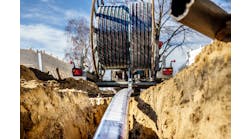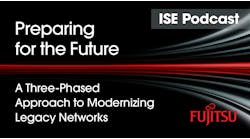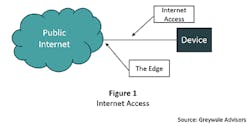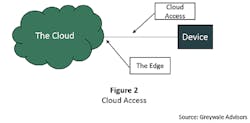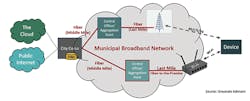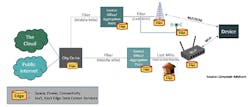Latest from Public Private Partnerships (P3)/Municipal Broadband
The Cloud, The Edge and Municipal Broadband
Intertwined to Create a Platform to Enable Vibrant Communities of the Future —
The Cloud, The Edge and Municipal Broadband are intertwined to create a platform to enable vibrant communities of the future. Municipal broadband infrastructure are The Roads to The Edge of The Cloud, and they enable The Hyper-localized Edge.
Battling 5G for the hype championship has been "The Cloud" and now "The Edge". The Cloud has grown from a remote disk drive to store photos to the mainstream storage, compute and application platform driving the world’s economy. All aspects of personal and corporate life are being cloudified or are going cloud native. The Edge of the cloud is expanding out from the biggest cities to cities and towns closer and closer to the end user. The edge is showing up at the base of cell tower and may soon be hyper-localized at your neighborhood fiber hut.
Before "The Cloud", a cloud was a great metaphor for the public Internet. Easy concept: send a packet in one edge and out it comes on the other edge. The path it takes is irrelevant since the Internet is connectionless. It certainly made life easy in Powerpoint when a cloud became a standard shape. Internet access was a line from a rectangle denoting a device, or a building, to the edge of Internet cloud. (See Figure 1.)
When you leave PowerPoint, the public Internet cloud is made up of lots of real buildings filled with racks full of electronic equipment and lots of fibers connecting them. The Powerpoint straight line connecting the device to the edge of the Internet is the broadband network comprised of last mile access and middle mile transport. For public internet access you need to get to one of the big Internet inter-exchange facilities (The Internet Core’s Edge1 where Content Delivery Networks (CDN)s store web content for quick delivery over today’s best effort last 100’s-mile broadband networks
Then our Powerpoint cloud shape got usurped by "The Cloud". (See Figure 2.) This cloud, like the public Internet cloud, is made up of lots of real buildings filled with racks full of electronic equipment and lots of fibers connecting them. The cloud has an edge too. Not surprising, the edge of the cloud was initially in the same locations at the edge of the Internet. This worked great for email services. Yet, unless your nearest big city is one of these Internet edge cities it doesn’t make technical nor economic sense to send all your traffic hundreds of miles to the big edge. Thus, the cloud edge has expanded outward to other big cities, medium cities, small cities, cell towers and fiber huts.
Municipal Broadband Role in the Cloud and the Edge.
Let’s assume that municipal broadband is critical civil infrastructure that provides, at a minimum, dark fiber to all reasonable locations. With this approach the municipal broadband network essentially becomes the roads to the edge of the cloud.
This network of roads includes last mile access and middle mile transport. They’re the network of all the fibers running down the streets connecting all reasonable locations (e.g., buildings, homes, cell towers) to local aggregation points. (See Figure 3). The first local aggregation point is the first network location where there’s physical access to the individual fiber strands and where the first piece of network side electronics could be. The first aggregation point could be the designated Central Office or data center at city hall, a cage rented at the local telco central office or in any convenient building. It could also be in neighborhood fiber huts that extend outward from the central office. The cell tower or small cell site also acts as a first aggregation point for local wireless 4G/5G traffic.
Figure 3. Municipal Broadband Network Roads to the Cloud
The middle mile connects the local aggregation points to big city interconnect or co-location buildings where the cities interconnects with other service providers and cloud companies. Middle mile fiber should be available to the city on a wholesale transport basis. However, the lack of middle mile fiber has been an added challenge for many rural communities.
The fiber that connects each location in the city to the first aggregation point and combined with the middle mile transport forms the roads to the edge of the cloud and to the Internet.
The Edge
From a cloud provider perspective, "The Edge" is a real estate discussion. Cloud providers need real estate, a location, to put electronics (e.g., servers, switches) with electric power and lots of connectivity that’s waterproof. For many technical and economic reasons, the edge is expanding outward from the big Internet edge cities to smaller cities and towns. Latency is a common technical reason. If you locate your servers closer to you, you reduce latency. The economics are equally as simple. Real estate costs tend to decrease as you get away from big city centers and connectivity should cost less over much shorter distances.
As cloud companies desire to expand edge locations closer and closer to commercial and residential customers, they need physical locations. The municipal broadband network’s aggregation points, including the fiber huts, are ideal edge locations (See Figure 4). Each is the logical geographic location for edge intensive applications as they are either in city centers or in fiber huts located close to end users. They would also have the waterproof space, power and connectivity required. There should be lots of municipal dark fiber to cell sites as well, enabling the owners to offer edge data center services at those locations.
Figure 4. Municipal Broadband Network Hyper-Localized Edge Facilities
Municipal Participation
The municipality has a range of participation options in the cloud and the edge. If the city has chosen a dark fiber open access model, they can take a similar passive approach and make their aggregation facilities available on a pure real estate lease basis to an edge data center facility operator(s). If the city has chosen a lit fiber open access model and prefer an active approach, they can create a wholesale Infrastructure-as-service -model and wholesale servers and even virtual machines to cloud service providers and virtual network functions to retail network operators. As one might expect there are many options in-between and a wide range of public-private-partnership models.
Like this Article?
Subscribe to ISE magazine and start receiving your FREE monthly copy today!
In the future, as the municipal broadband network enables the hyper localized edge, more and more data traffic will remain local. This is true for both residential and business data traffic. More traffic will flow to and from the end user locations to a variety of hyper localized edge facilities and from edge facility to edge facility. Less traffic will flow upstream to the big city edge facilities and less traffic will traffic will be bound for the public Internet. This is another reason not to equate broadband with "internet access". (See https://isemag.com/2019/02/municipal-broadbands-definition-is-critical-to-success/)
The Cloud, The Edge and Municipal Broadband
The Cloud, The Edge and Municipal Broadband are intertwined to create a platform to enable vibrant communities of the future. The municipal broadband network provides the roads to the edges of the cloud. All local aggregation points, whether a building or fiber hut, are natural locations for cloud edge data center services enabling the hyper localized edge. The fusion of the cloud and the edge with municipal broadband will create a platform that will drive new applications and change the economics of the cloud and the economies of communities.
Source
1. In the U.S. the Edge of the Core is: NYC, DC, Atlanta, Dallas, LA, San Jose, Seattle, Chicago.


